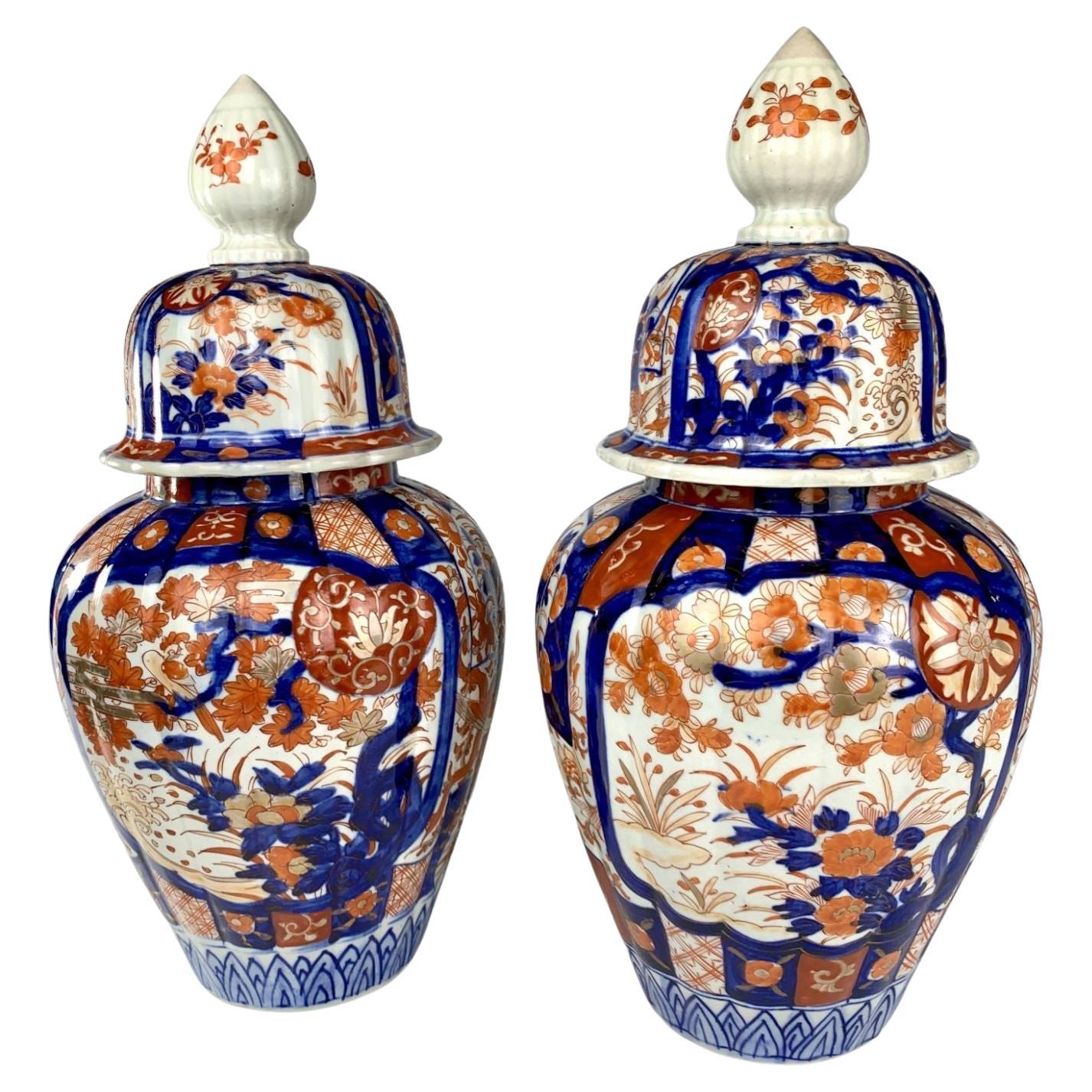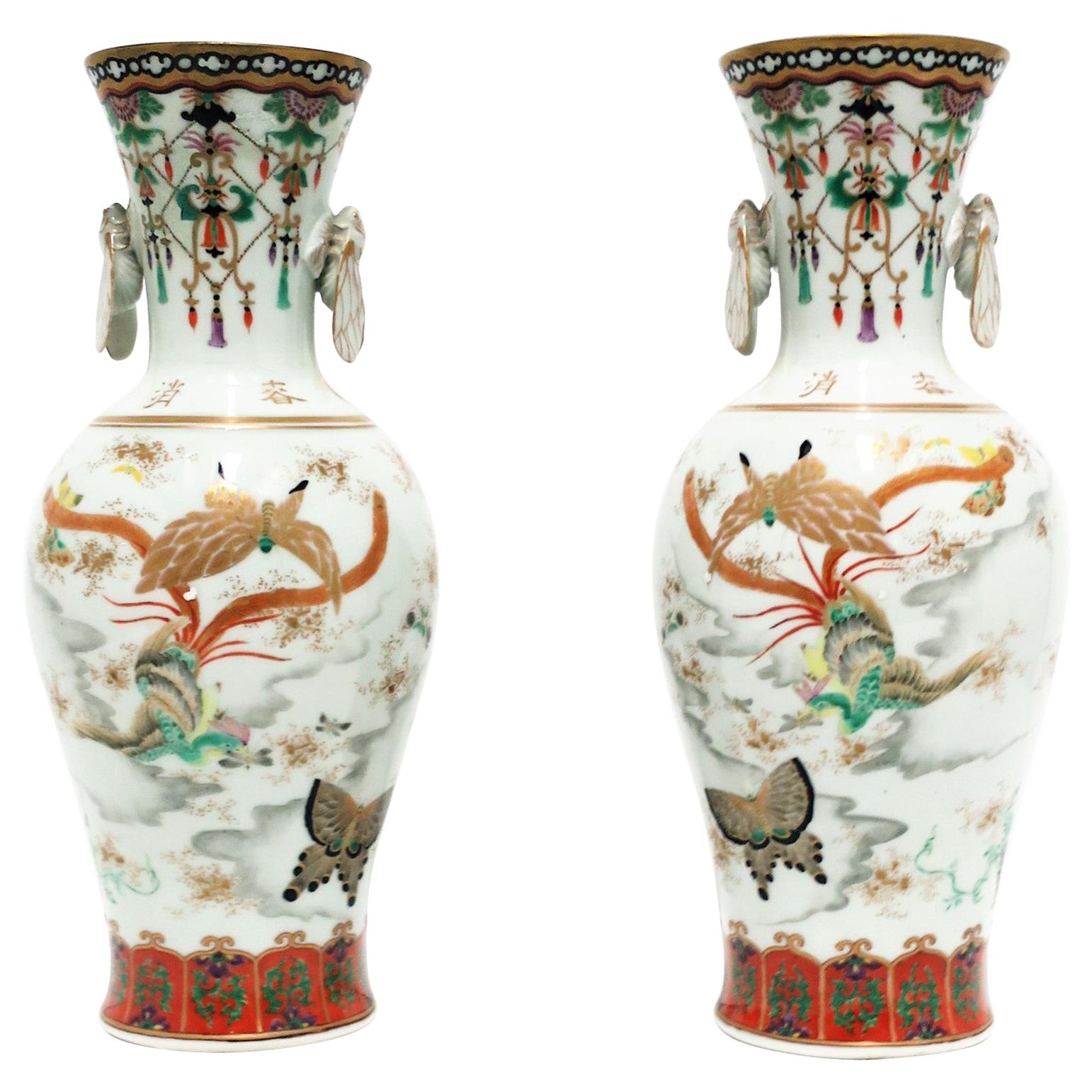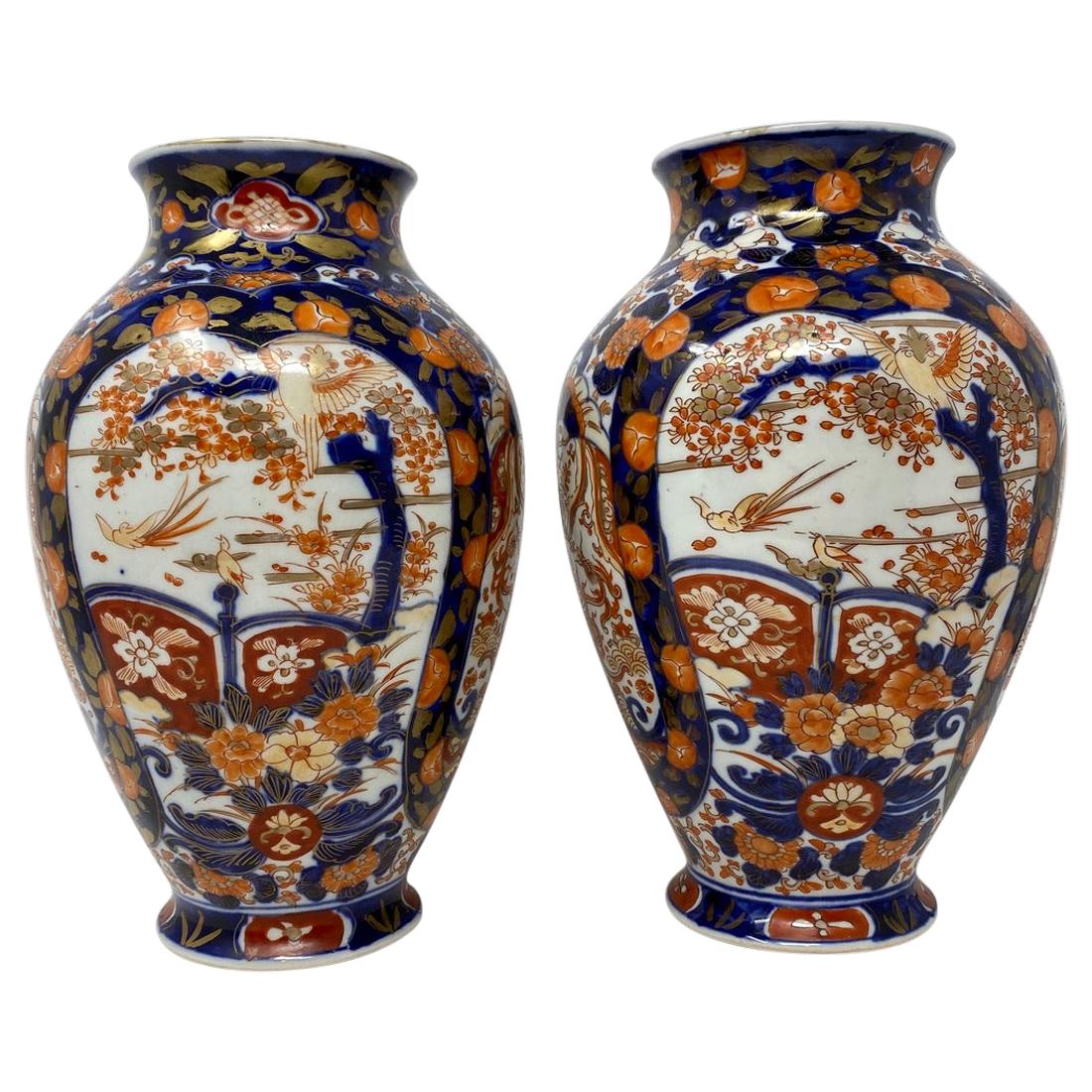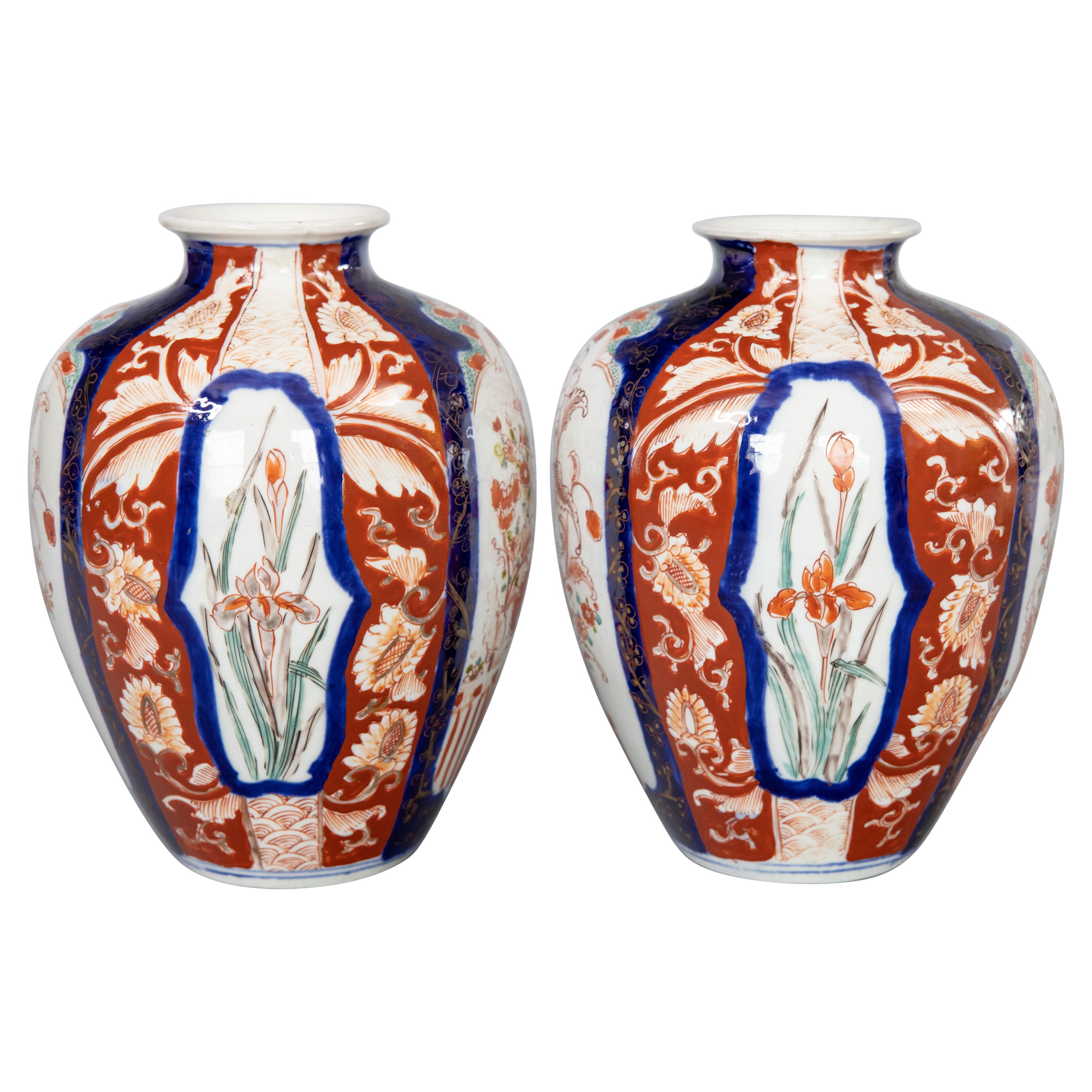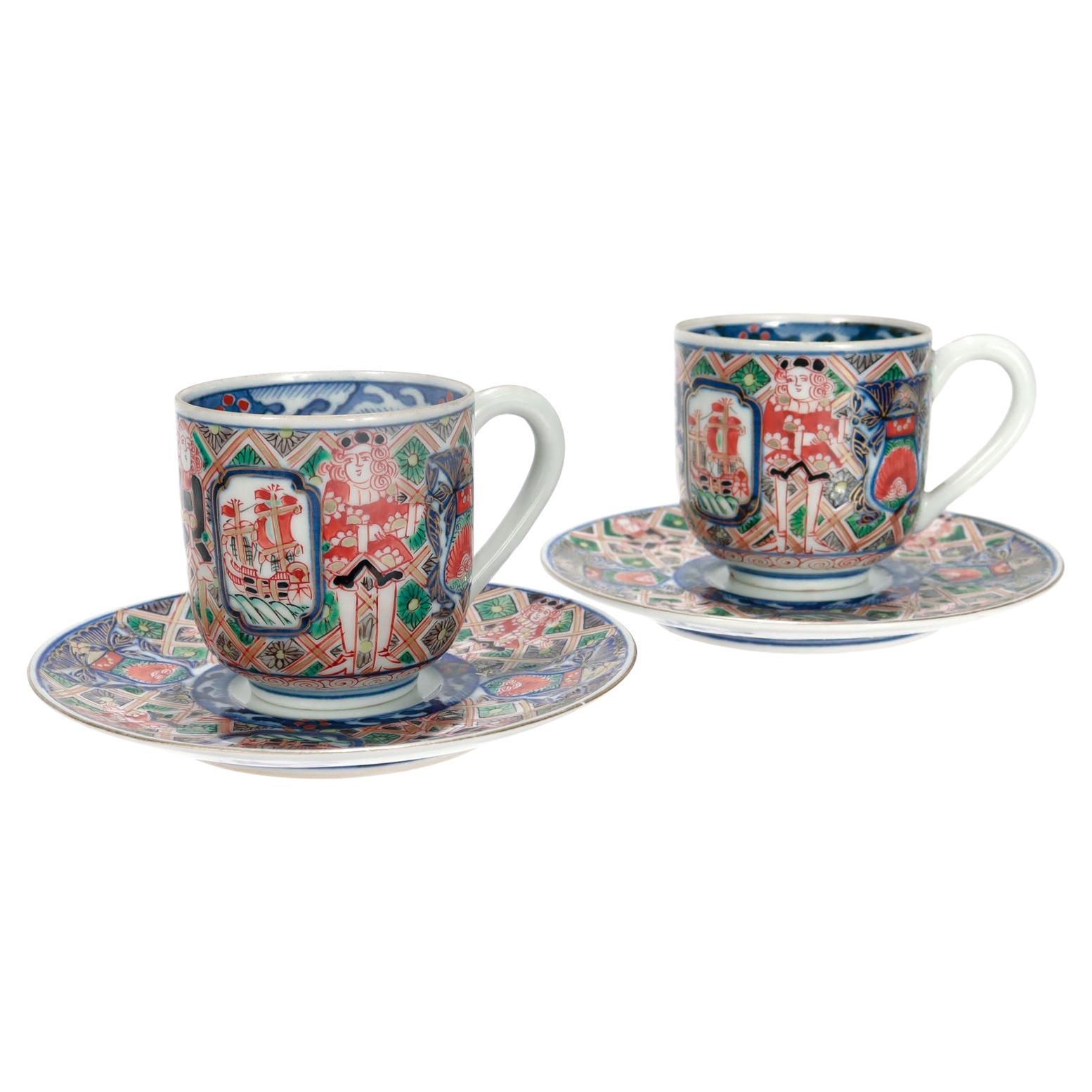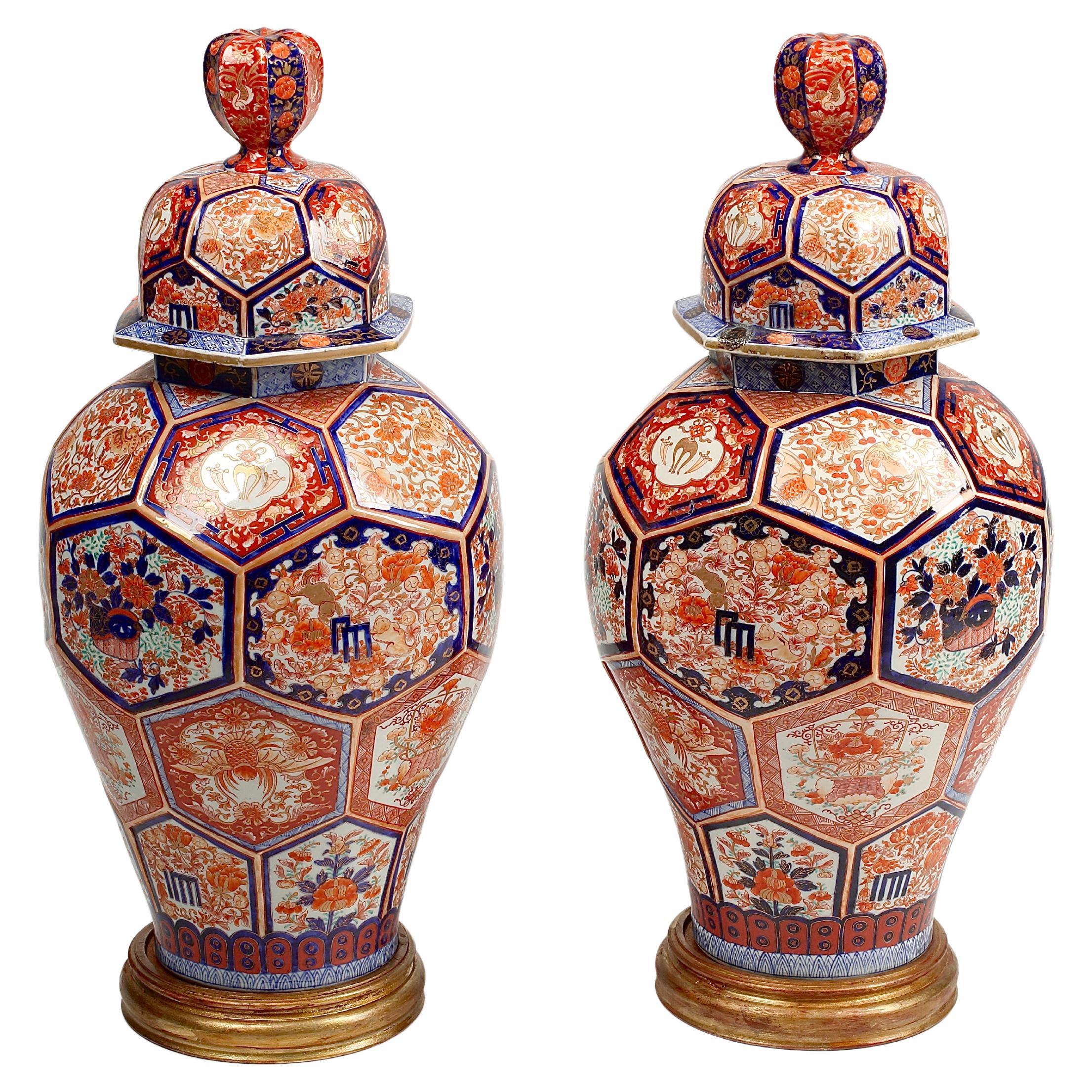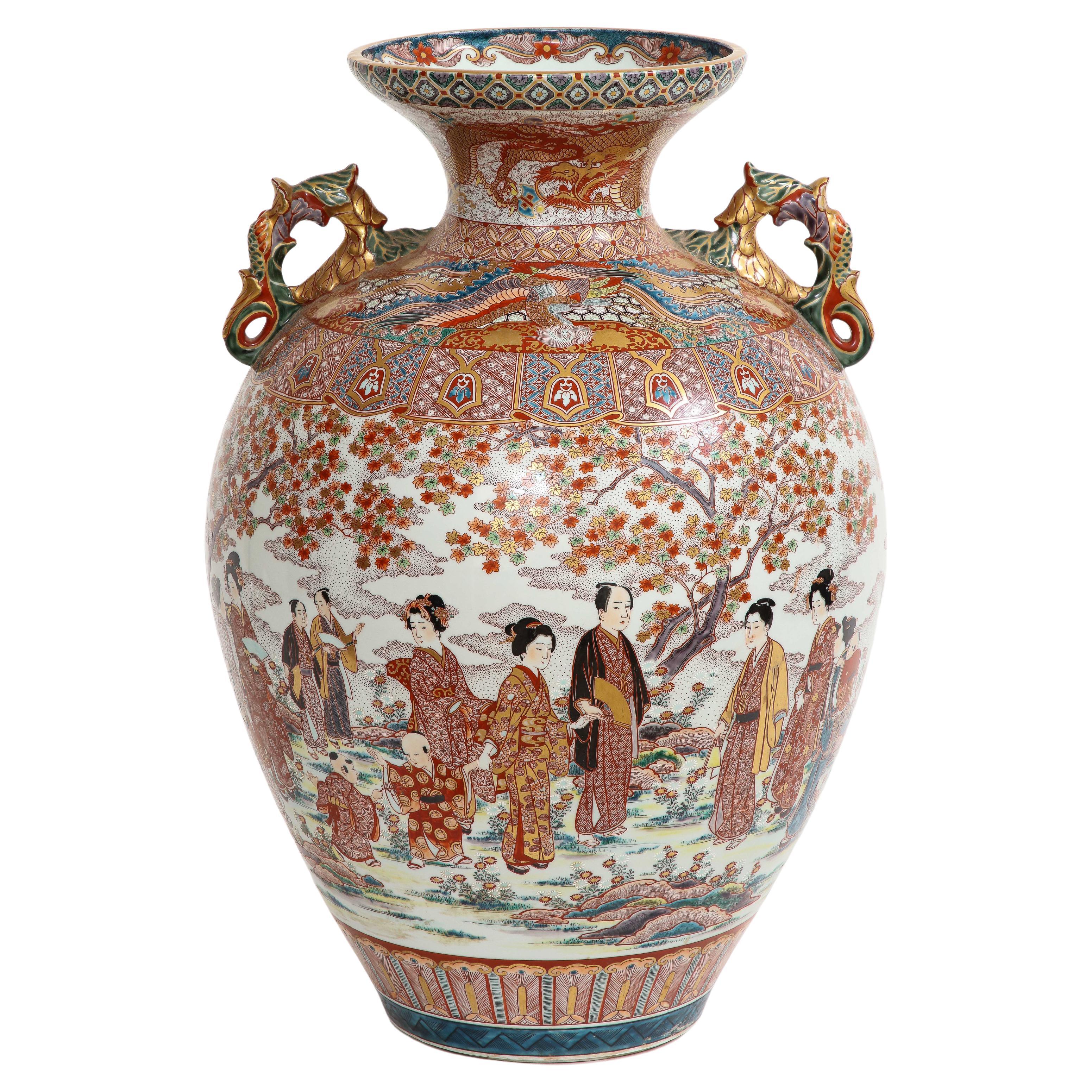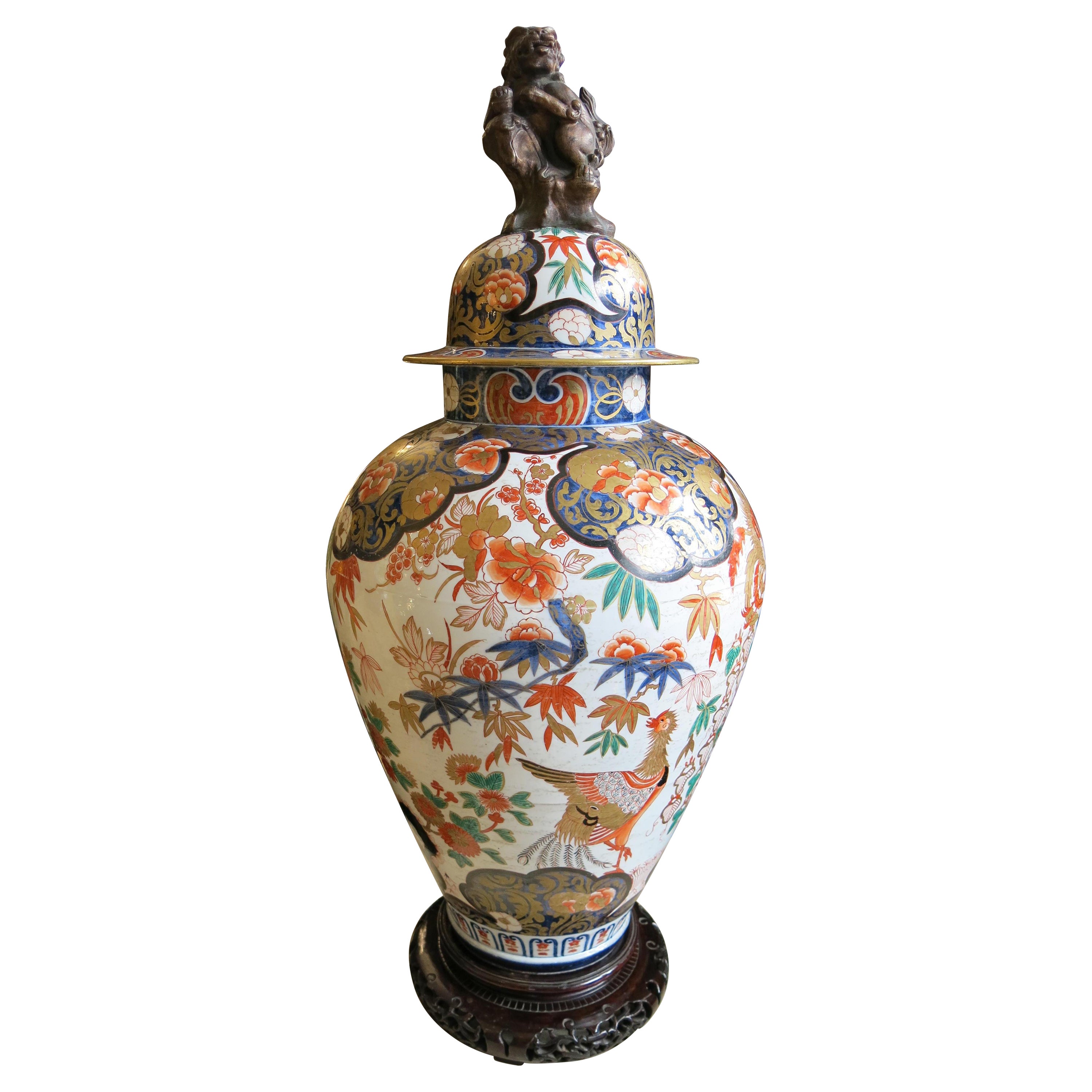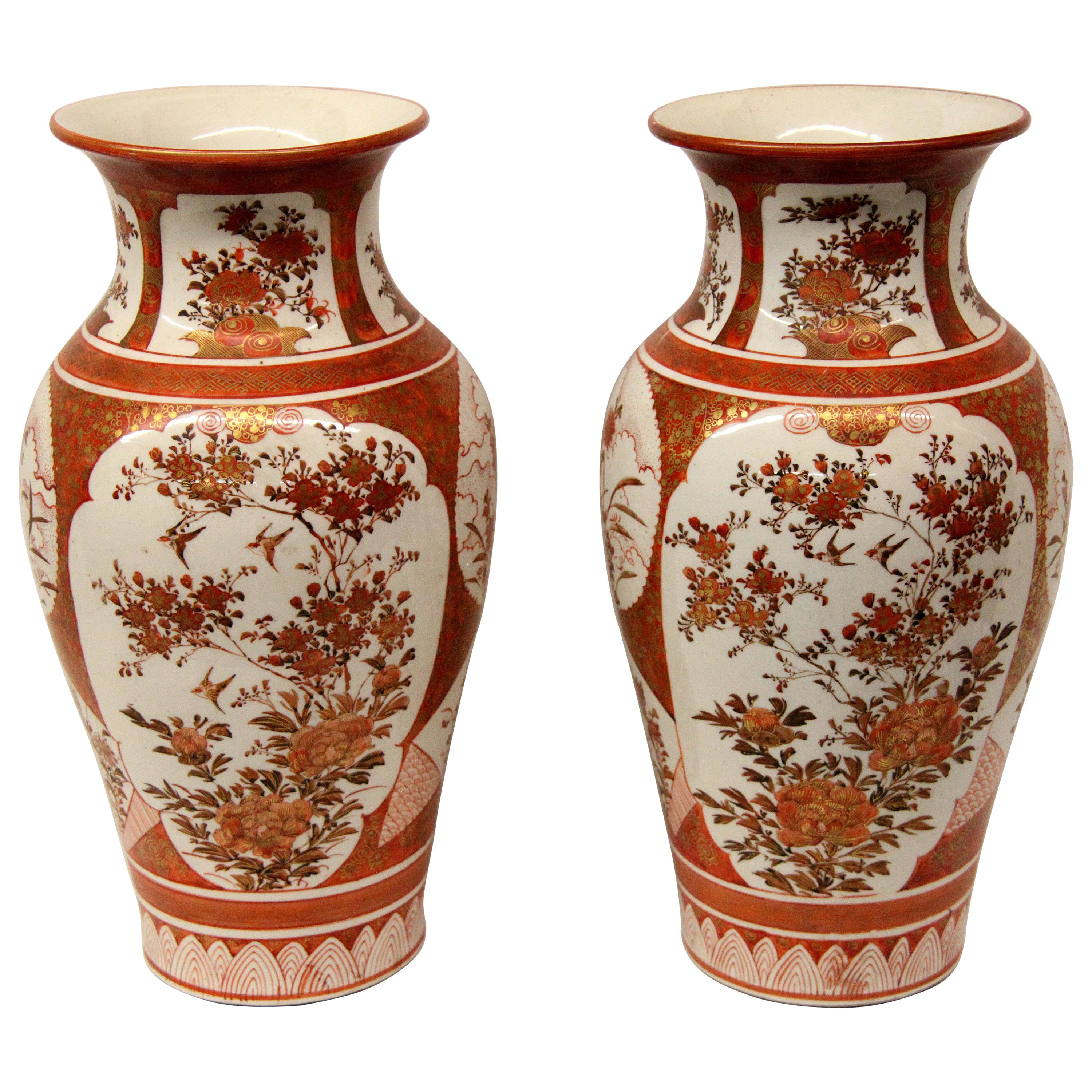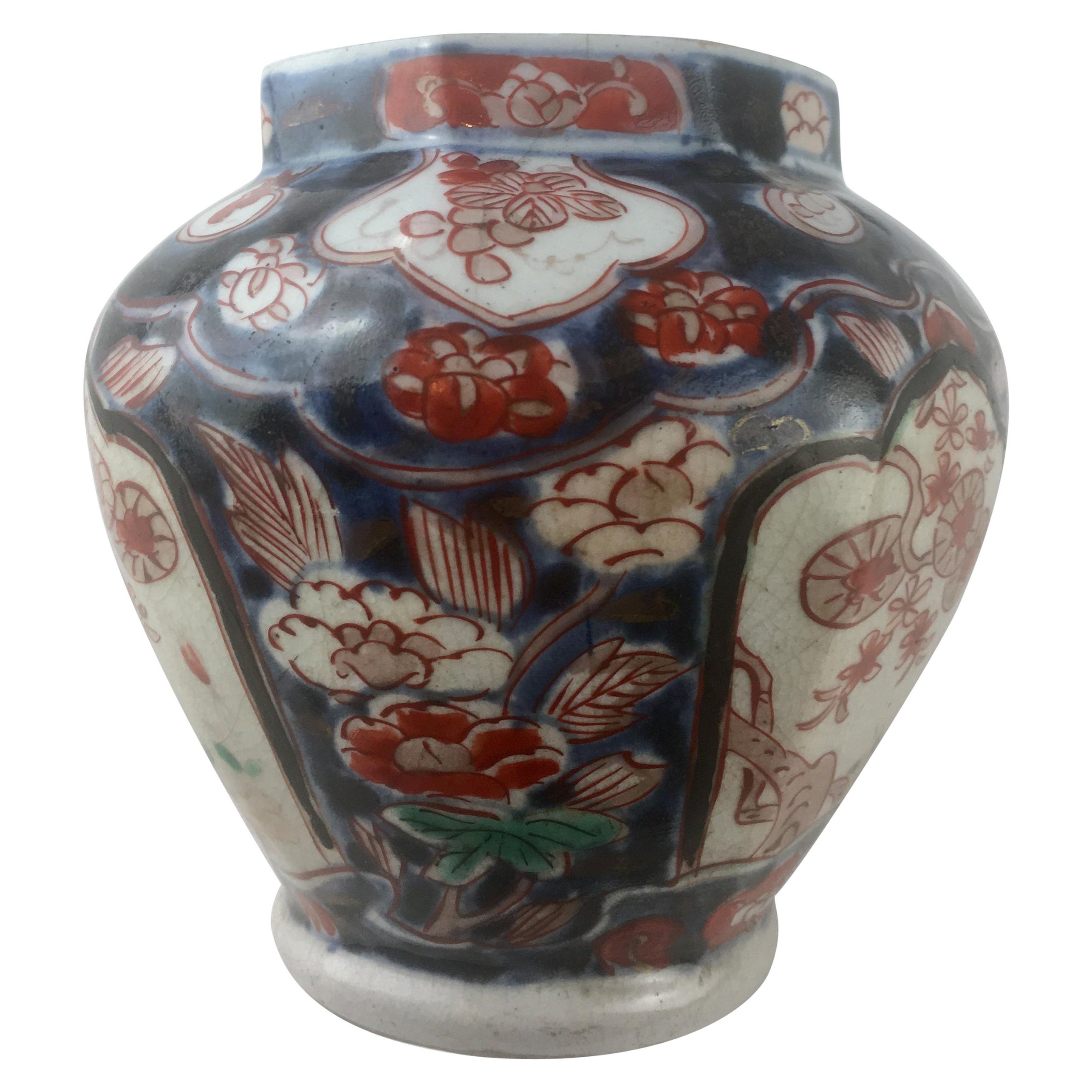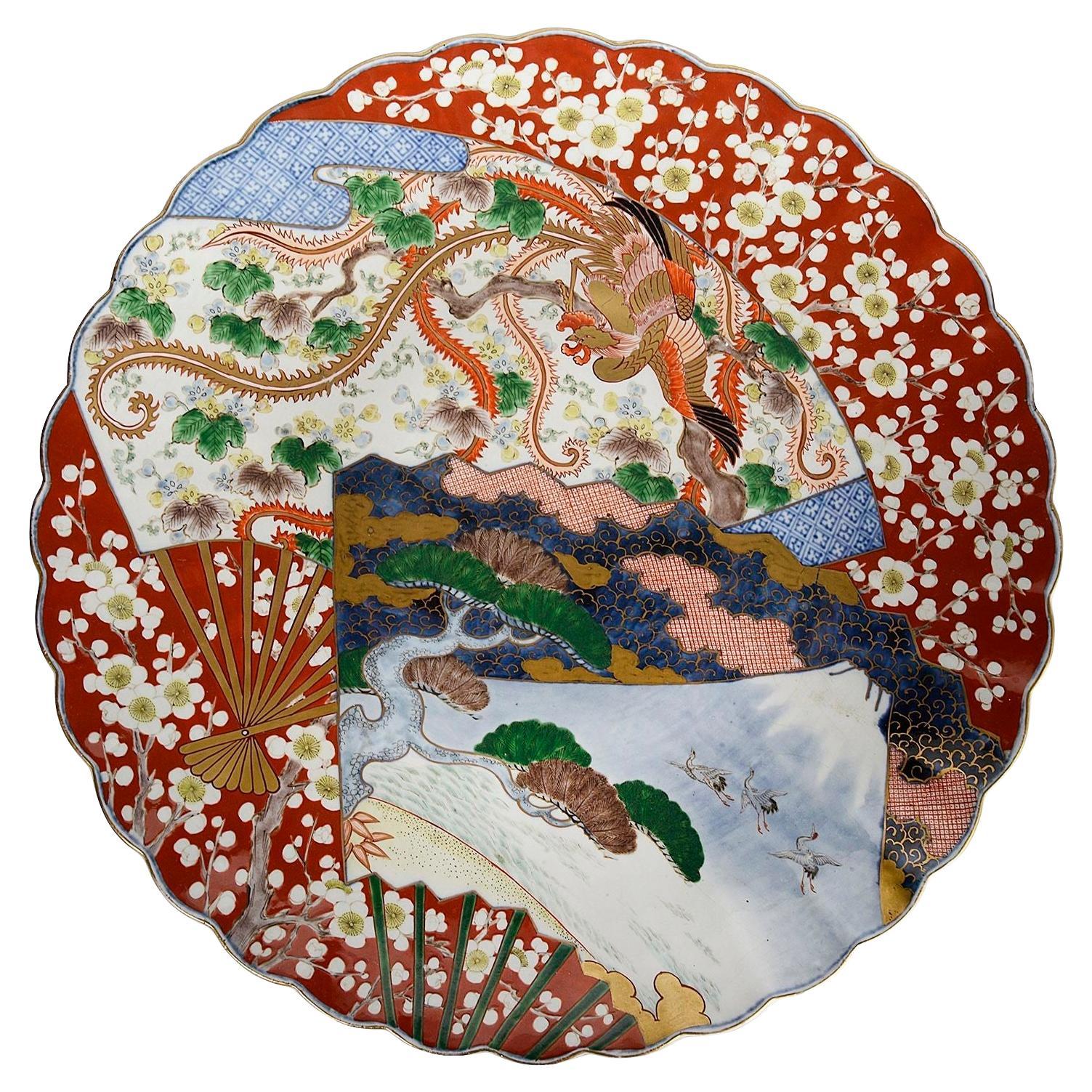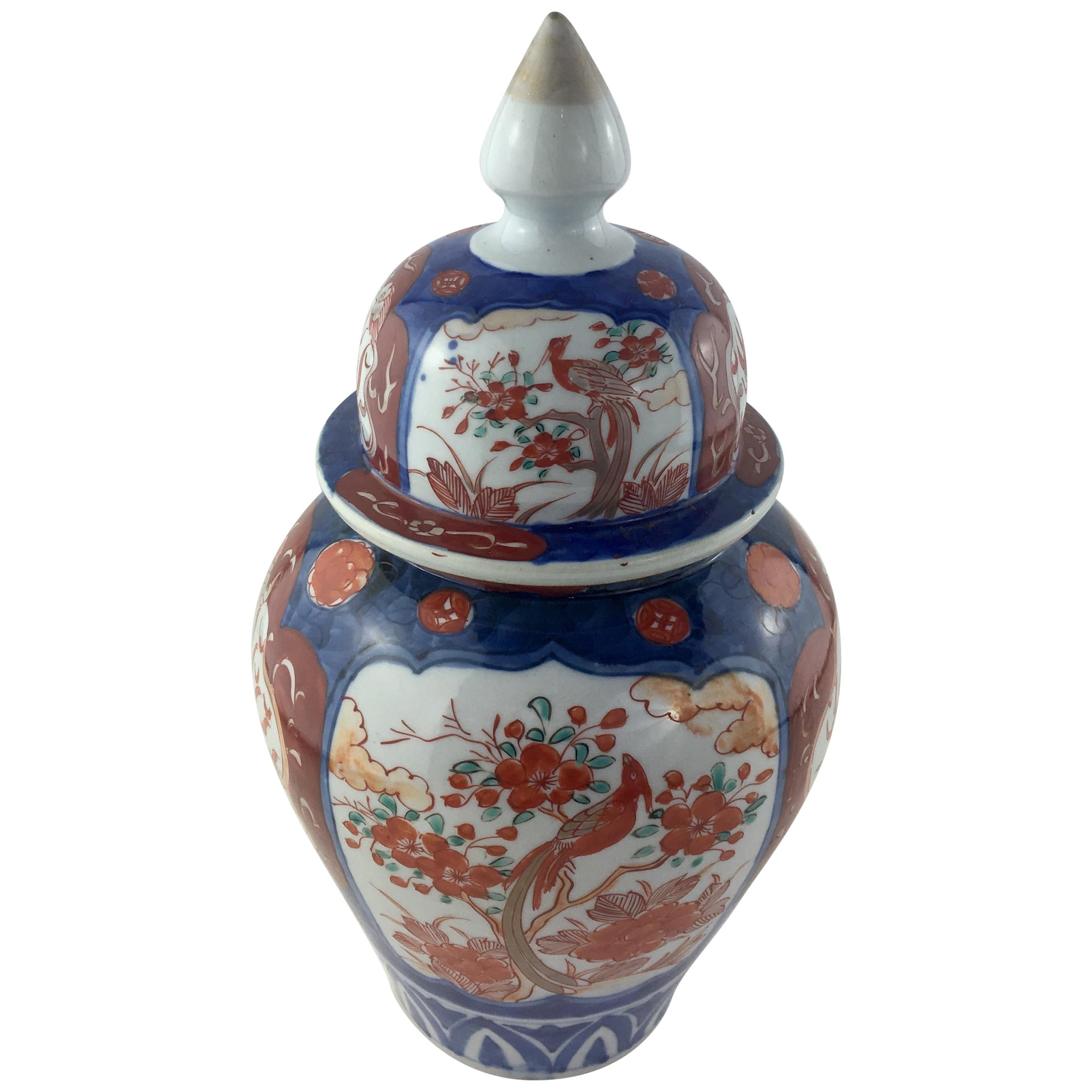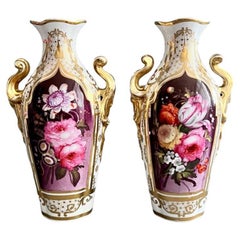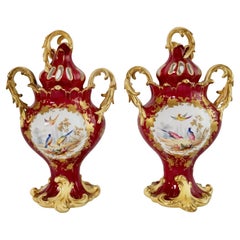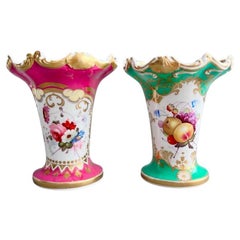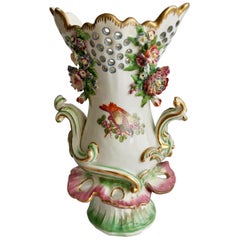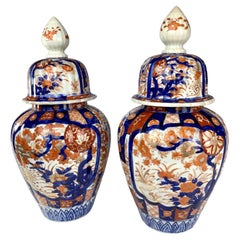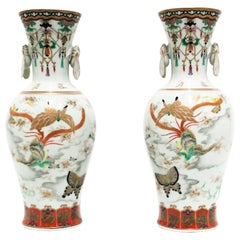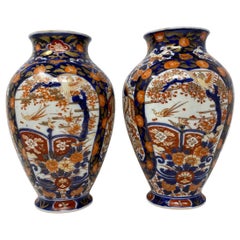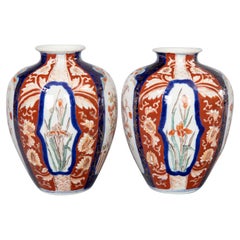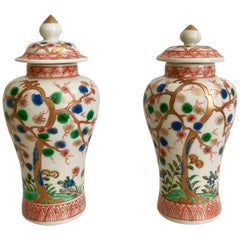
Pair of Small Japanese Imari Vases with Prunus, Aoki Kyodai-Shokai late Meiji
View Similar Items
Want more images or videos?
Request additional images or videos from the seller
1 of 18
Pair of Small Japanese Imari Vases with Prunus, Aoki Kyodai-Shokai late Meiji
About the Item
- Dimensions:Height: 6 in (15.24 cm)Diameter: 3 in (7.62 cm)
- Sold As:Set of 2
- Style:Meiji (Of the Period)
- Materials and Techniques:
- Place of Origin:
- Period:
- Date of Manufacture:19th Century
- Condition:Wear consistent with age and use. No damage, repairs, crazing or significant wear.
- Seller Location:London, GB
- Reference Number:Seller: CP04-101stDibs: LU4805115528621
About the Seller
5.0
Gold Seller
Premium sellers maintaining a 4.3+ rating and 24-hour response times
Established in 2016
1stDibs seller since 2019
225 sales on 1stDibs
Typical response time: 2 hours
Authenticity Guarantee
In the unlikely event there’s an issue with an item’s authenticity, contact us within 1 year for a full refund. DetailsMoney-Back Guarantee
If your item is not as described, is damaged in transit, or does not arrive, contact us within 7 days for a full refund. Details24-Hour Cancellation
You have a 24-hour grace period in which to reconsider your purchase, with no questions asked.Vetted Professional Sellers
Our world-class sellers must adhere to strict standards for service and quality, maintaining the integrity of our listings.Price-Match Guarantee
If you find that a seller listed the same item for a lower price elsewhere, we’ll match it.Trusted Global Delivery
Our best-in-class carrier network provides specialized shipping options worldwide, including custom delivery.More From This Seller
View AllCoalport Pair of Vases, Persian Revival Gilt with Puce Floral Reserves, ca 1845
By Coalport Porcelain
Located in London, GB
This is a stunning and very rare pair of vases made by Coalport in around 1845. The vases have rich gilding in the Persian Revival style, combined with very English floral reserves of freely painted flower bouquets on a puce ground. Incorporated into the gilding on the back of the vases is a very English swan...
Category
Antique 1840s English Rococo Revival Vases
Materials
Porcelain
$1,750 / set
Free Shipping
H&R Daniel Pair of Potpourri Vases, Maroon, Birds, Flowers, Rococo Revival c1840
By H&R Daniel
Located in London, GB
On offer is a stunning pair of potpourri vases with covers made by H&R Daniel in about 1840. The vases are in the Rococo Revival style, and have a deep maroon ground and reserves wit...
Category
Antique 1840s English Rococo Revival Vases
Materials
Porcelain
Samuel Alcock Pair of Vases, Maroon, Emerald Green, Fruits, Flowers, ca 1831
By Samuel Alcock & Co.
Located in London, GB
This is a pair of beautiful small vases in the "shell and scroll" design with elaborately moulded rim picked out in gilt. One vase is maroon with elegant gilding and a beautiful flow...
Category
Antique 1820s English Regency Vases
Materials
Porcelain
Chelsea Porcelain Frill Vase with Birds, Rococo ca 1760
By Chelsea Porcelain
Located in London, GB
This is a charming frill vase made by the Chelsea Porcelain factory in about 1760. The vase is in the Rococo style and it speaks for itself why this style of vase is called a "frill" vase.
This vase has undergone restorations (although it still holds water perfectly) and is therefore offered As Found (A/F) at a reduced price.
Chelsea was one of the very early adopters of porcelain in the British china industry. Founded in 1744 the Chelsea pottery was for about 40 years the leading maker of fine chinaware, excelling in their sense of style, perfection and constant innovation and inspiring many following generations of china makers. The company was started by French silversmith Nicholas Sprimont and you can see the influence of the French style of silverware...
Category
Antique 1760s English Rococo Porcelain
Materials
Porcelain
Royal Worcester Porcelain Potpourri Vase or Urn with Hadley Roses, 1923
By Royal Worcester
Located in London, GB
This is a very fine small potpourri vase and cover made by Royal Worcester in 1923. The urn has a blush ivory ground with exceptionally beautiful hand painted Hadley roses.
Potpourr...
Category
Vintage 1920s English Edwardian Urns
Materials
Porcelain
English Garniture of 3 Vases, Empire Style, Provenance G.Godden, 1810-1815
By Ridgway Porcelain
Located in London, GB
This is a spectacular garniture of three vases made by an English factory between 1810 and 1815. The vases are made in the French Empire style with heavily gilded Egyptian caryatid s...
Category
Antique 1810s English Regency Vases
Materials
Porcelain
You May Also Like
Pair of Antique Japanese Imari Jars Meiji Period Circa 1880
Located in Katonah, NY
Both jars are hand-painted in traditional Imari designs. They feature beautiful waterside scenes painted in cobalt blue and two shades of iron red, all with gilded accents.
The colors are vibrant, and the scenes are complex.
One jar features a shoreline, while the other scene features a cresting wave.
Above the main scenes on each jar, there are medallions adorned with gilded floral decorations. Additionally, a ring of patterns inspired by Japanese textiles encircles the shoulder and base of each jar.
The hand-painted panels on the reverse side mirror the designs on the front but include many subtle variations.
On the side of each jar, there is a classic Imari depiction of a vase set on a garden terrace.
These exquisite pieces were crafted in Japan during the Meiji Period, around 1880.
Dimensions: 15" tall x 7" diameter at the widest point
Condition: Excellent.
Price: $2,800
Background of Late Imari Porcelain: Imari porcelains were first exported from Japan to Europe in the 17th century. In the third quarter of the 19th century, Imari porcelain found an eager export market in Europe as the style was compatible with the colors and designs of the oriental rugs used...
Category
Antique Late 19th Century Japanese Jars
Materials
Porcelain
Art Deco Japanese Kutani Porcelain Vases Meiji Period, Pair
Located in New York, NY
A very beautiful pair of polychromed Kutani porcelain Japanese vases, circa early 20th century, Meiji period, Japan. Vases are hand painted and designed with two different sides; one...
Category
Early 20th Century Japanese Meiji Porcelain
Materials
Porcelain
Pair of Antique Japanese Imari Vases, circa 1860-1870
Located in New Orleans, LA
Pair of antique Japanese Imari vases, circa 1860-1870.
Category
Antique Late 19th Century Japanese Porcelain
Materials
Porcelain
Pair of 19th Century Japanese Imari Porcelain Vases
Located in Pearland, TX
A gorgeous pair of 19th-Century Japanese Imari porcelain vases. These fine vases have a lovely shape and hand painted floral design in the traditional Imari...
Category
Antique Late 19th Century Japanese Vases
Materials
Porcelain
$1,195 Sale Price / set
20% Off
Pair of Antique Japanese Meiji 'Black Ship' Imari Porcelain Cups & Saucers
By Imari Porcelain
Located in Philadelphia, PA
A fine pair of antique Japanese Imari porcelains demitasse coffee or tea cups & saucers.
In the 'Black Ship' pattern.
Decorated throughout with painted depictions of Western sailors and their ships in reds, blues, and greens with extensive gilt accents throughout.
The centers of the cups and saucers each have a stylized gilt kanji for longevity (寿).
The bases of both cups & saucers have apocryphal Chinese reign marks for the Ming Dynasty of the Chenghua period (太明成化年製).
Black Ships (黒船, kurofune) was a name used for Western sea vessels arriving in Japan from the 16th - 19th Century. The name originated from the very first Portuguese vessels to trade with the Japanese ca. 1543 had hulls painted black. When the expedition of Matthew Commodore Perry in 1853 forcibly ended Japan's self-imposed isolationist sakoku (鎖国, lit. "locked country") period, his steam-powered warships inspired fear in the Japanese populace with their coal fueled black smoke. Subsequently, the Black Ships became symbolic of the end of Japan's isolationist period.
Simply a wonderful set of antique Arita...
Category
Early 20th Century Porcelain
Materials
Porcelain
Pair of Large 19th Century Japanese Imari Porcelain Temple Jars with Cover
Located in El Monte, CA
An exceptional pair of large scale late 19th century Japanese Imari temple jars from the Meiji period with covers, also can be referred to as ginger jars. Rare octagonal facet cuts a...
Category
Antique Late 19th Century Japanese Meiji Porcelain
Materials
Porcelain
Recently Viewed
View AllMore Ways To Browse
Imari Japan Mark
Imari Vase Late 19th Century
Small Blue Porcelain Vase Pair
Blue Cherry Blossom Vases
Small Japanese Vase Pair
Prunus Vase
6 Beautiful Vases In Different
Imari Covered Vase
Small Imari Vase
Pair Prunus
Japanese Blue Cherry Blossom Vessel
Glass Nancy France Vase
Gold Vase Stand
Murano Glass Cenedese
Retro Wall Vase
Sevres Porcelain Mounted
Small Bronze Vase
Wooden Centerpiece
